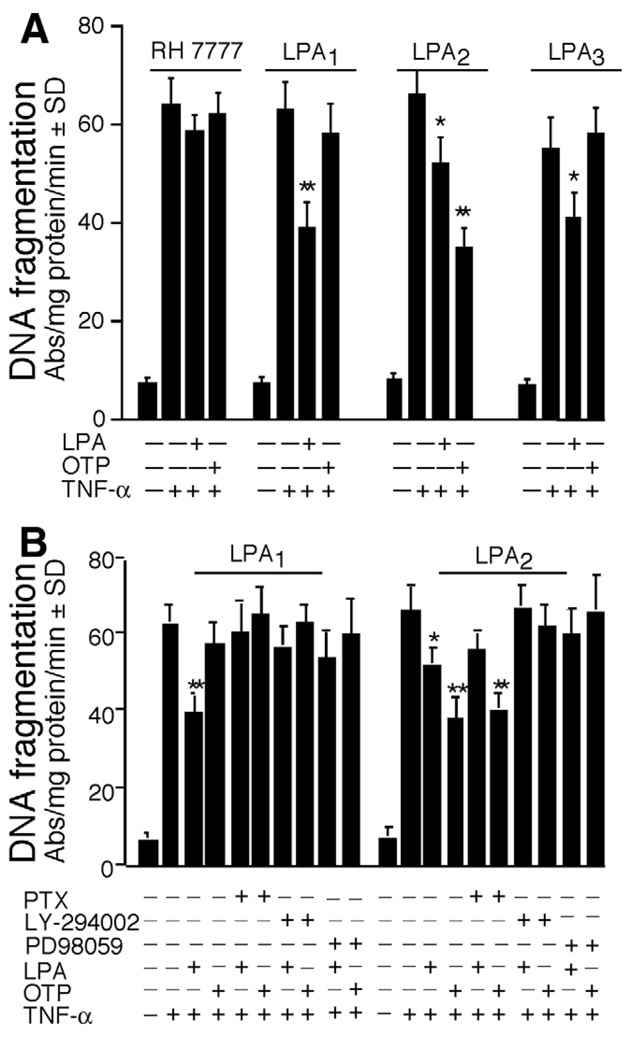Figure 4.
OTP selectively protects LPA2 transfectants against TNF-α/CHX–induced apoptosis. (A) RH7777 cells were transfected with empty pCDNA3.1 vector or LPA1, LPA2, or LPA3 and preincubated with 10 µmol/LOTP or LPA for 15 minutes, followed by TNF-α (20 ng/mL) plus CHX (10 µg/mL) exposure to induce apoptosis. Note that whereas LPA reduced TNF-α/CHX–induced DNA fragmentation in all 3 transfectants, OTP was effective only in LPA2 cells. Both ligands elicited Ca2+ transients in these same cell lines (see Figure 1C). (B) LPA1 and LPA2 transfectants were pretreated with PTX overnight (50 ng/mL), the MEK inhibitor PD98059 (20 µmol/L) for 1 hour, or the PI3K inhibitor LY294002 (10 µmol/L) for 30 minutes, followed by the addition of 10 µmol/L OTP or LPA for 15 minutes and challenged with TNF-α (20 ng/mL) plus CHX (10 µg/mL). DNA fragmentation was evaluated 6 hours after addition of TNF-α/CHX. The reduction in DNA fragmentation was partially sensitive to PTX in LPA2 cells and was abolished in LPA1 cells. *P< .05, **P< .001 compared with TNF-α/CHX alone. Data shown are means ± SD of 3 experiments.

